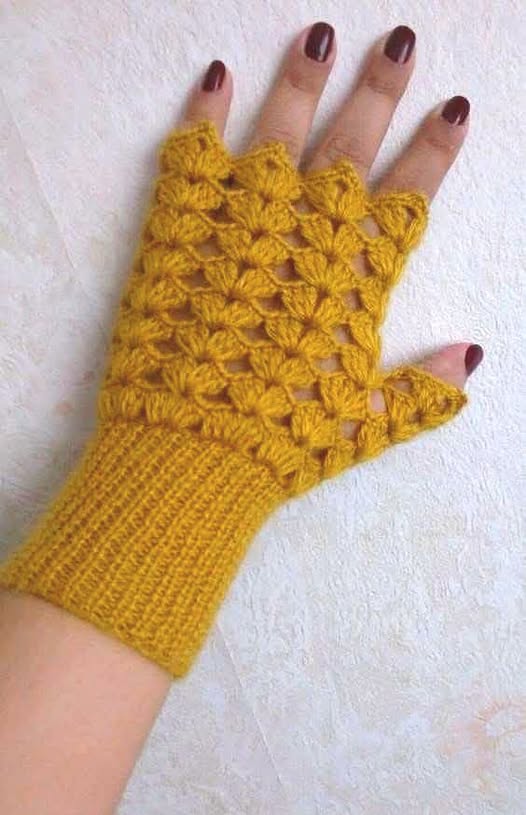
Crafting Beauty: The Apache Tears Crochet Pattern is more than just a delightful project—it’s a creative journey into texture, tradition, and color play. For both seasoned crocheters and beginners, this pattern is a rewarding way to add depth and dimension to handmade pieces.
The unique tear-drop shaped design, inspired by the historical Apache Tears gemstone, brings emotional symbolism and visual flair into every stitch.
The name itself evokes a poetic sense of artistry and history. As you work through the Apache Tears crochet pattern, you’ll find it both meditative and engaging, especially with the color changes that make the motif so captivating.

Whether you’re making a cozy blanket, a bold cushion, or even wearable accessories, this pattern will challenge your creativity while grounding you in a rich tradition of fiber arts.
In this article, we’ll explore how to approach this pattern step by step, share useful techniques to master it, and provide tips on selecting the right yarns and colors.
Let’s dive into the world of textured crochet and discover why the Apache Tears Crochet Pattern continues to inspire crocheters across the globe.
The Apache Tears Crochet Pattern is instantly recognizable due to its striking diagonal stripes and layered texture. This pattern is often created using the “Spike Stitch,” which involves working into rows below the current one to create an elongated loop or “tear.”
To begin, you should be familiar with basic crochet stitches like single crochet and double crochet. The beauty of this pattern lies in how these simple stitches are combined to create an intricate look. The vertical alignment of the stitches gives the illusion of complexity, even though the execution remains beginner-friendly with a little practice.
One of the standout features of this pattern is the interplay between colors. By changing colors at the end of each row and allowing the spike stitches to dip into previous color rows, you create a cascading effect that resembles falling tears. The more contrasting the colors, the more dramatic the design appears.
The pattern is highly customizable in size. Whether you’re crafting a scarf, a baby blanket, or a wall hanging, you simply adjust your foundation chain and number of rows to fit the dimensions you want. It’s also a wonderful stash-buster for using up leftover yarn from previous projects.
It’s recommended to plan your color palette ahead of time. Choose 3 to 5 complementary colors and assign a repeating order. Planning in this way ensures a cohesive and balanced final product. You can also experiment with gradients or high-contrast schemes for different effects.
A foundation row of single crochet creates the best base for your project. It provides stability and helps your spike stitches retain their sharp visual lines. Blocking your project afterward will further enhance the sharpness and alignment of your stitches.
When working with the Apache Tears Crochet Pattern, choosing the right yarn makes all the difference. A smooth, medium-weight yarn (like worsted or DK) is ideal for highlighting the pattern’s texture. Avoid fuzzy yarns that obscure the stitch definition, as the pattern’s impact lies in its clarity.
A size H/8 (5.0mm) or I/9 (5.5mm) crochet hook typically works well with worsted-weight yarn. However, always refer to your yarn’s label and create a swatch to test your tension. Uniform tension is key in this pattern to keep your spike stitches consistent in length.
Before starting, gather your yarns, hook, scissors, and a yarn needle for weaving in ends. Since this project involves frequent color changes, you’ll have a lot of ends to secure—another reason to weave them in as you go rather than saving them all for the end.
Consider using stitch markers to help keep your place, especially if you’re working on a large item like a blanket. Marking the beginning and end of rows can prevent your edges from becoming uneven over time.
It’s helpful to practice the spike stitch on a small swatch before starting your main project. This gives you a feel for how deep to insert your hook and how to control your tension to maintain even loops. A neat spike stitch should be elongated but not floppy.
Keep a notebook or digital tracker handy to log your color order and row counts. This is especially useful for large projects or for revisiting the pattern in the future. A small bit of planning can save you a lot of backtracking later.
One of the most popular uses for the Apache Tears Crochet Pattern is making throws and lap blankets. The pattern’s rich texture adds a warm, comforting feel, making it perfect for cozy evenings on the couch.
This pattern is also frequently used in cushion covers. The vertical stripes and texture look stunning on a decorative pillow, especially when paired with solid-colored furniture or bedding. It’s an easy way to add handmade charm to any living space.
Scarves and wraps are other excellent applications. The drape and rhythm of the spike stitches work beautifully in long, narrow pieces. These accessories make thoughtful gifts, especially in bold, customized color palettes.
Crocheters often use this pattern to make vibrant tote bags or market bags. By working in flat panels and stitching them together, you can create a visually arresting and functional item with ease. Just be sure to line your bag for added strength.
Wall hangings are another creative outlet for this pattern. Use natural tones for a boho vibe, or bright contrasting colors for a more playful look. These projects work well on dowels and can be a great way to practice your spike stitches.
Finally, the Apache Tears Crochet Pattern is wonderful for patchwork projects. Create squares or rectangles and join them together like quilt blocks. This opens the door to infinite customization, from baby blankets to bedspreads and beyond.
To truly master the Apache Tears Crochet Pattern, focus on stitch consistency. Your spike stitches should all reach the same depth, which maintains the visual rhythm of the tears. Uneven stitches can disrupt the pattern’s flow.
Color transitions should always be clean. Change colors in the last pull-through of the previous stitch so that the next row begins cleanly. This small trick can elevate the professionalism of your project.
Avoid cutting your yarn at every color change if you’re repeating a short cycle of colors. Instead, carry your yarn up the side of your work neatly. Later, you can either incorporate those edges into a border or leave them as a fringe.
Blocking is essential once your piece is complete. This step relaxes the fibers, straightens out the spike stitches, and makes your final project look polished. Use pins and a spray bottle for gentle blocking or a steam iron with care.
Don’t be afraid to adapt the pattern to your skill level. Beginners can keep the design simple by using only two colors and fewer rows. More experienced crocheters can experiment with yarn textures, multicolor fades, and mixed motifs.
Most importantly, enjoy the process! The Apache Tears Crochet Pattern is not just about the result—it’s about the calming rhythm of stitching and the joy of watching your colors unfold row by row.
What skill level is needed to crochet the Apache Tears pattern?
This pattern is suitable for advanced beginners or intermediate crocheters. Familiarity with single crochet, color changes, and the spike stitch is recommended.
How many colors should I use for the best effect?
Most versions use between three to five colors. Contrasting hues create a bolder look, while tonal shades offer a more subtle gradient.
Can I use this pattern for baby items?
Yes, as long as you use soft, baby-friendly yarn. Avoid spike stitches that are too long, as they could snag tiny fingers.
How do I avoid a messy edge with all the color changes?
Carry your yarn up the side of the project and crochet a border to hide the edges. This technique keeps your work neat and avoids unnecessary cutting and weaving.
Is blocking necessary for this pattern?
Yes, blocking helps set the stitches and enhance the texture. It ensures your project lies flat and shows off the tears beautifully.
Can I use different types of yarn?
Yes, but choose smooth yarns for best results. Avoid fluffy or novelty yarns that hide stitch definition, as the beauty of this pattern is in the clarity of the spike stitches.
The Crafting Beauty: The Apache Tears Crochet Pattern is a stunning example of how technique, tradition, and color can come together in harmony. From home décor to wearable accessories, this pattern opens up a world of possibilities for creative expression and personalized gifting.
Throughout this article, we explored the materials, uses, and methods that bring this pattern to life. With a little patience and creativity, even beginners can achieve professional-looking results that truly stand out.
Have you tried this pattern before? Leave your honest opinion in the comments below and share your ideas or color combinations. Your suggestions help others and inspire the community to keep crafting beauty one stitch at a time.
